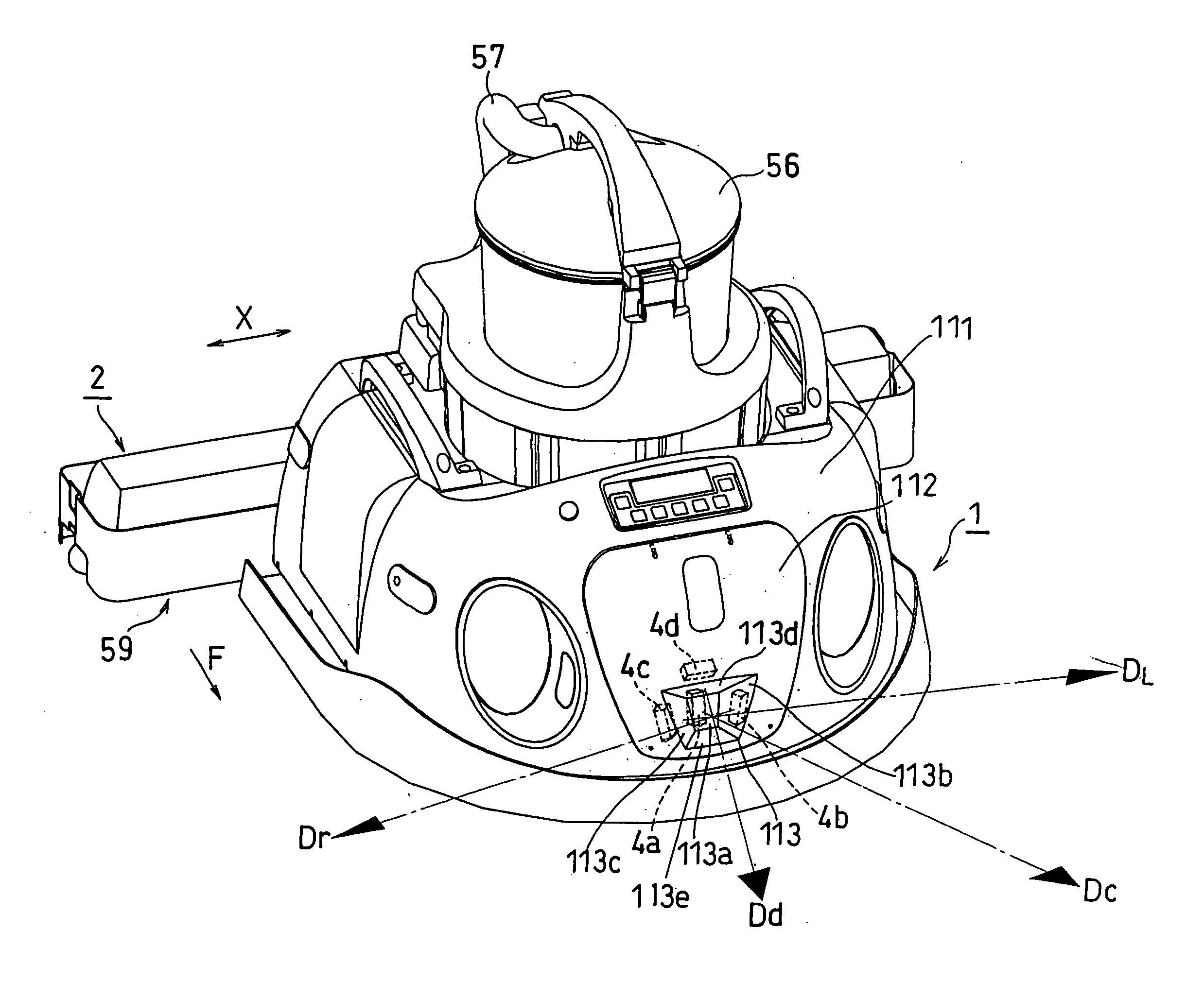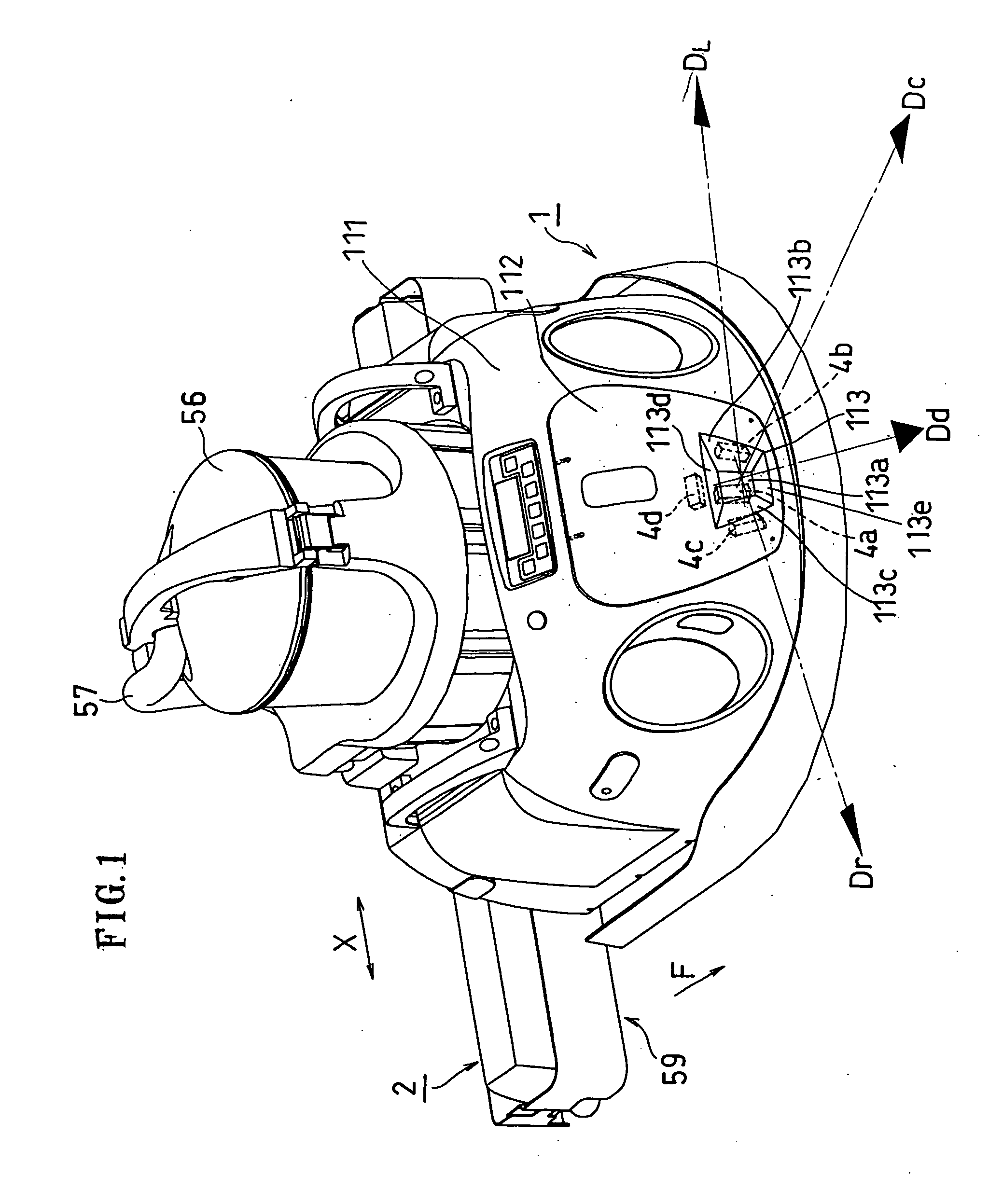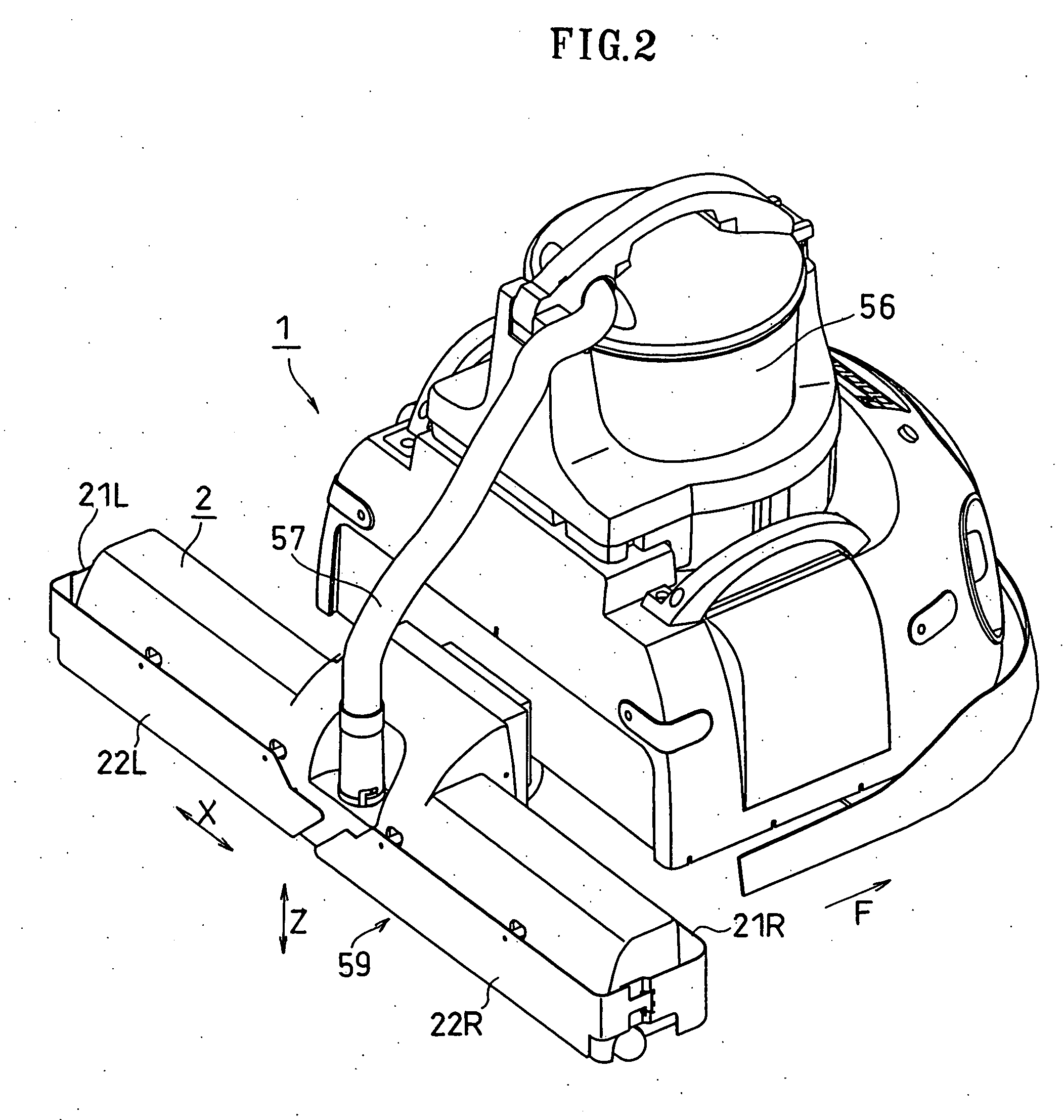Self-propelled working robot
a self-propelled, robot technology, applied in the direction of process and machine control, distance measurement, instruments, etc., can solve the problems of difficulty in detecting, and inability to do corner work
- Summary
- Abstract
- Description
- Claims
- Application Information
AI Technical Summary
Benefits of technology
Problems solved by technology
Method used
Image
Examples
first embodiment
[0121]
[0122] As shown in FIGS. 1 and 2, the self-propelled working robot of the present embodiment includes a carriage-like traveling assembly 1 for self-traveling across the floor surface, and a working assembly 2 for sucking up dust from the floor. The working assembly 2 is provided behind the traveling assembly 1 with respect to the primary moving direction F of the traveling assembly 1.
[0123] The suction unit 56 is provided in an upper portion of the traveling assembly 1. The suction unit 56 includes a dust receptacle (tank), a blower motor, a filter, etc. The suction unit 56 and the working assembly 2 are connected to each other via a suction hose 57. A suction hole 59 is provided on the lower surface of the working assembly 2. As the present working robot does cleaning work while traveling around, the dust particles on the floor are sucked up through the suction hole 59 one after another, thereby cleaning the floor surface.
[0124] Traveling Assembly 1:
[0125] As shown in FIG....
second embodiment
[0246]
[0247] General Configuration:
[0248] A working robot 100 of this embodiment includes the traveling assembly 1 and the working assembly 2 as shown in FIGS. 15(a) and 15(b). As shown in FIGS. 14(a) and 14(b), the traveling assembly 1 includes the driven wheels 6a and 6b for driving the traveling assembly 1, and non-driven wheels 9a and 9b for maintaining the balance of the traveling assembly 1. The driven wheels 6a and 6b are driven by drive motors 5a and 5b, respectively. The drive motors 5a and 5b can be spun in opposite directions (reversible), and the spinning thereof is controlled by a microcomputer (control means) 8.
[0249] When traveling straight, the two drive motors 5a and 5b are spun in the same direction so that the traveling assembly 1 can move forward or backward.
[0250] For a turn (rotating) operation, the two drive motors 5a and 5b are spun in opposite directions, whereby the traveling assembly 1 can turn (rotate) in place about a vertical line (center of rotation...
PUM
 Login to View More
Login to View More Abstract
Description
Claims
Application Information
 Login to View More
Login to View More - R&D
- Intellectual Property
- Life Sciences
- Materials
- Tech Scout
- Unparalleled Data Quality
- Higher Quality Content
- 60% Fewer Hallucinations
Browse by: Latest US Patents, China's latest patents, Technical Efficacy Thesaurus, Application Domain, Technology Topic, Popular Technical Reports.
© 2025 PatSnap. All rights reserved.Legal|Privacy policy|Modern Slavery Act Transparency Statement|Sitemap|About US| Contact US: help@patsnap.com



